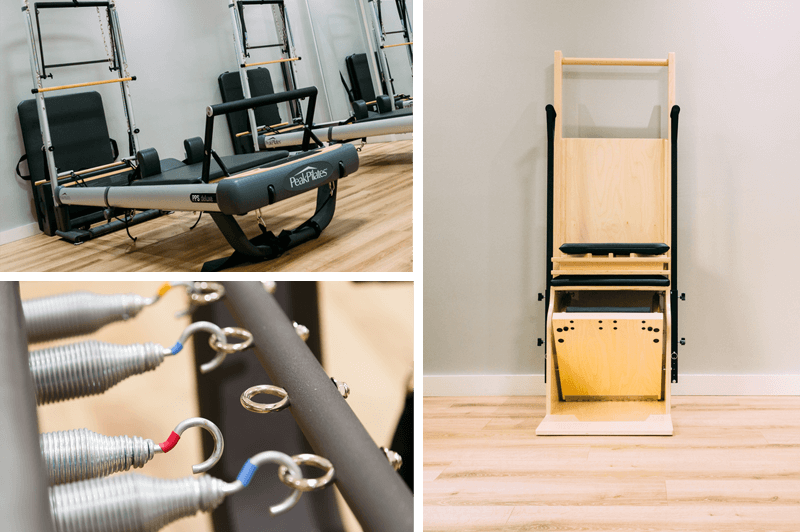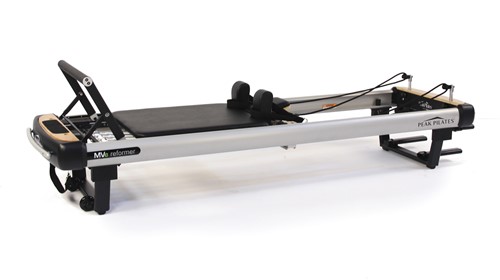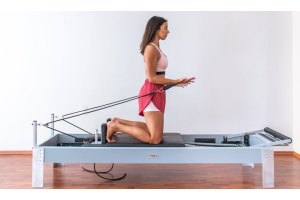The Evolution of Pilates: Classical vs. Contemporary

Did you know that Pilates was originally developed to rehabilitate injured soldiers and dancers? It also used to be called ‘Contrology’. Founded by Joseph Pilates in the early 1900s, the earliest form of Pilates used apparatus and a fluid sequence of movements to improve and restore mobility after minor musculoskeletal injuries. Pilates exercises continue to be used for these purposes today, but they are also used to boost muscle and bone strength and wellbeing.
A carpenter and gymnast, Joseph Pilates believed that physical and mental health were closely connected and designed exercises that encouraged a healthier relationship between the mind and body. He combined his carpentry expertise with his knowledge of gymnastics to create specialist Pilates equipment, known as a reformer bed.

Classical Pilates vs Contemporary Pilates - what’s the difference?
With Pilates boasting a history spanning over 100 years, there’s been plenty of room for growth. It’s now split into two types: classical and contemporary. Find out more about the different styles of Pilates below.
What is Classical Pilates?
Classical Pilates sticks as closely as possible to the original exercises of Joseph Pilates. It follows a sequence of movements that engages all the joints in the body. Transitions between movements are also considered part of the exercise. The workout is designed to be fluid and efficient. Beginning with simple, foundational exercises, the sequence gradually becomes more challenging.
A key feature of classical Pilates is the position of the pelvis, which typically features abdominal exercises in a posterior tilt. When lying on your back, the lower spine is completely pressed into the floor or reformer, creating a tuck in the pelvis.
What is Contemporary Pilates?
Contemporary Pilates doesn’t stray too far from the work of Joseph Pilates, but offers some modern adjustments and upgrades to the exercises. For that reason, it’s also known as hybrid Pilates. Contemporary Pilates still offers the traditional movements but also combines other fitness realms, such as yoga, physiotherapy, aerobics and aerials. This offers more variety and challenges your body in new and creative ways.
These developments are heavily influenced by physical therapy and biomechanics. They also provide a little more creativity and flexibility in your Pilates sessions. With contemporary reformers, the springs provide the resistance alongside your body weight. This means you get an extra boost as your muscles are having to work a little bit harder.
A key difference from classic Pilates is the position of the pelvis. Contemporary Pilates will generally teach exercises in a neutral pelvis position, to match the natural position of your spine when standing upright. Unlike classical Pilates, when lying on your back the lower spine will have some space between the back and the floor.

Which type of Pilates is right for you?
There is no right or wrong choice. You may even want to try your hand at both to see which style you enjoy the most. However, as mentioned above, the contemporary style has been adjusted with modern scientific and medical research in mind.
Today, Peak Pilates offers a wide range of Pilates equipment with advanced designs that are handcrafted from natural and sustainable woods.
Interested in starting your Pilates journey? Peak Pilates has plenty to offer, with their equipment suitable for both contemporary and classical exercises. If you need a little help getting started, you can always hire a Pilates fitness instructor or find inspiration with the Peak Pilates online community.
Is Peak Pilates Classical or Contemporary?
Inspired by the exercises of the founding father of Pilates, Peak Pilates equipment is suitable for both classical and contemporary Pilates, making it a truly versatile apparatus.
Shop Peak Pilates equipment for home and commercial use online at Gymkit today.




